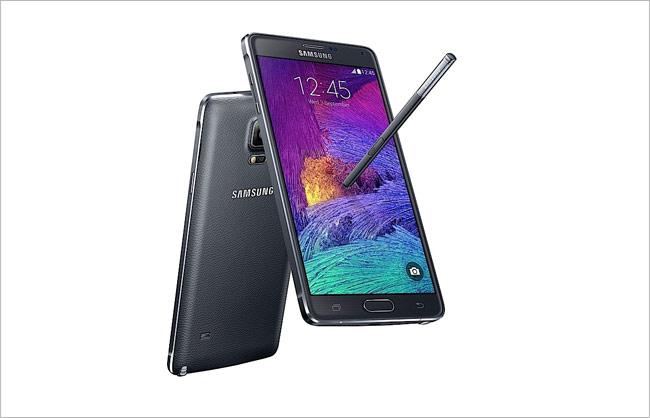Clearly, the Galaxy Note 4 was not enough for Samsung because on Tuesday it also announced the Galaxy Note Edge at IFA in Berlin, Germany. The Galaxy Note Edge is a unique device. It has a screen that curves on the right side of its edge, hence the name.
The curved screen was first shown by Samsung at CES in Las Vegas two years ago. But that was in a prototype. On Wednesday, the company brought the technology to an actual product that will be sold in the market.
But what is the big deal with the curve? A lot, actually.Even though on paper, the Note 4 and the Note Edge look similar in terms of hardware, they are different kind of products. Compared to the Note 4’s 5.7-inch screen, the Note Edge has a 5.6-inch screen. But the curved screen essentially gives two displays to the Note Edge — one is the big normal display and the other a thin strip of LCD on the right side. Both displays can be treated separately in software. This means they can be used for different purposes. As an example, Samsung at its media event showed that in the camera app the big display can be used for completely for live view while the controls can be positioned on the smaller display.
Similarly, the smaller display can be used for showing notifications that don’t require much space. This means a user can watch a video on the big screen and receive notifications on the smaller screen.
Other than the screen, the Note 4 and the Note Edge have the same hardware. The Edge is powered by a 2.7GHz quad-core Qualcomm Snapdragon 805 processor and supports LTE cat 6. Interestingly, this phone does not have a Exynos variant, which may also mean that it will not come to markets where LTE is widely available. in other words, the Note Edge could be a product that will be sold only in developed markets like the US and Korea and not in India where LTE is not yet widely available.
The Note Edge has a 16-megapixel rear camera with smart optical imagestabilisation and a 3.7-megapixel front camera with a f/1.9 aperture.
There’s also 3GB of RAM, 32/64GB memory options and a microSD card slot. It has a large 3,000mAh battery with fast charging via quack charge 2.0 technology. Other features of the device include a fingerprint scanner embedded in the home button and a heart rate monitor on the back.
It’s slightly thinner than the Note 4 at 8.3mm and weighs 174 grams. Software wise it is largely the same as the Note 4 expect that it has a list of apps docked on the curved area on the screen. It runs on Android 4.4 KitKat with Samsung’s TouchWiz user interface and also has the S-Pen.






